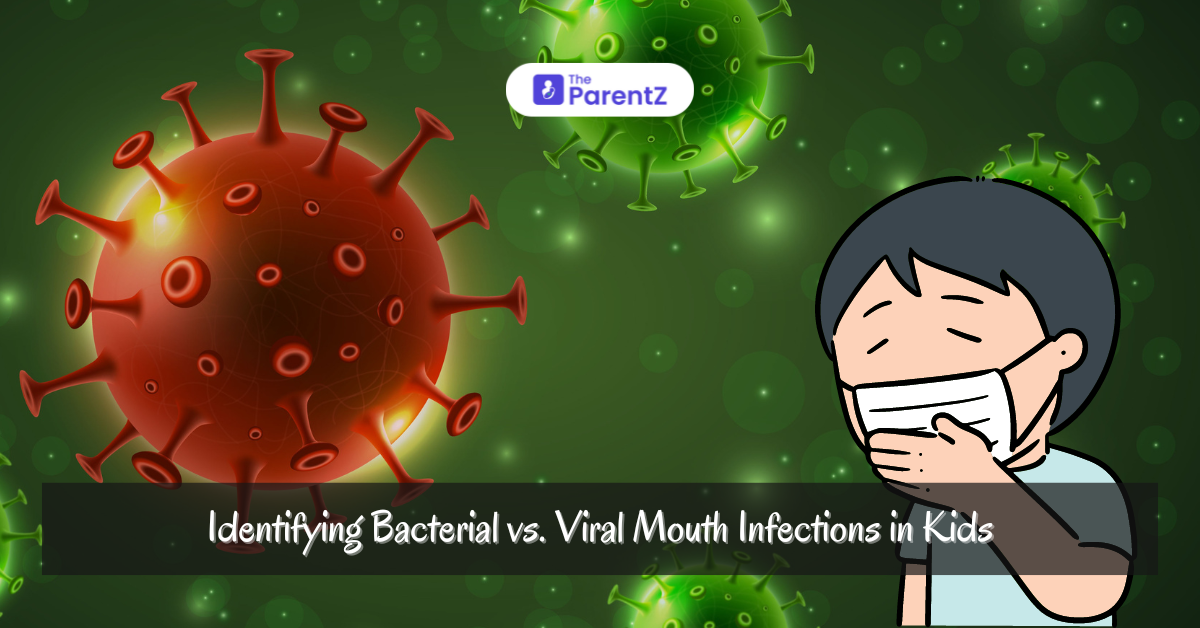Mouth infections in children are common, but it’s essential to know whether the infection is bacterial or viral to ensure proper treatment. As a parent, identifying the difference can feel overwhelming, but understanding the symptoms, causes, and treatment options can help you take the right steps to ensure your child’s oral health. This article breaks down everything you need to know about bacterial and viral mouth infections, making it easy to recognize the signs and seek the right care for your child.
What Are Bacterial Mouth Infections?
Bacterial infections occur when harmful bacteria multiply in the mouth, leading to conditions like gingivitis, abscesses, or strep throat. These infections often develop when the mouth's natural defense system is compromised, such as due to poor oral hygiene or a weakened immune system.
Causes of Bacterial Infections in Kids:
- Poor Oral Hygiene: Bacteria thrive when teeth and gums aren't cleaned properly.
- Dental Plaque: Plaque buildup creates a breeding ground for bacteria, leading to infection.
- Weakened Immune System: When a child’s immune system is not fully developed or is compromised, bacterial infections are more likely.
- Injury: Cuts or sores in the mouth can become infected with bacteria.
Symptoms of Bacterial Infections:
- Swelling and Redness: Inflamed gums or swelling in the mouth is a key sign.
- Pain and Sensitivity: Discomfort when eating or drinking, especially with hot or cold foods.
- Bad Breath: Persistent foul smell in the mouth despite brushing.
- Fever: Sometimes bacterial infections may cause a fever as the body tries to fight off the infection.
- Pus: In more serious cases, an abscess or pockets of pus may develop around the infection site.
What Are Viral Mouth Infections?
Viral infections, on the other hand, are caused by viruses like herpes simplex or the coxsackievirus. These infections are typically contagious and can spread through contact, such as sharing utensils, toys, or coming into direct contact with saliva.
Causes of Viral Infections in Kids:
- Contact with Infected Individuals: Sharing items or being in close contact with someone who has a viral infection can spread it to your child.
- Weakened Immune System: Viruses can take hold if the immune system is weakened or compromised.
- Seasonal Changes: Some viral infections spike in certain seasons, especially when kids are more prone to colds or flu.
Symptoms of Viral Infections:
- Mouth Ulcers: Small, painful sores or blisters in and around the mouth, like those caused by the herpes simplex virus (cold sores).
- Fever: A high fever often accompanies viral infections as the body attempts to fight off the virus.
- Sore Throat: In viral infections like hand, foot, and mouth disease, the child may complain of a sore throat.
- General Fatigue: Children may feel tired, weak, or more irritable when fighting off a viral infection.
How to Identify a Bacterial Infection
To determine if your child has a bacterial mouth infection, consider the following signs:
- Localized Symptoms: Bacterial infections often cause localized pain and swelling around the gums or a specific tooth.
- Discharge: If there’s a presence of pus, it’s a clear indication of a bacterial infection.
- Prolonged Symptoms: If the symptoms worsen or last more than a week, it’s likely bacterial.
How to Identify a Viral Infection
Viral infections often present differently from bacterial ones:
- Widespread Symptoms: Viral infections tend to affect multiple areas of the mouth (ulcers, sores, or blisters), along with more general symptoms like fatigue.
- Rapid Onset: Viral infections often develop suddenly and are accompanied by other flu-like symptoms (fever, body aches).
- Shorter Duration: Viral infections typically resolve on their own within a few days to a week.
Treatment for Bacterial vs. Viral Infections
Bacterial Infection Treatment:
- Antibiotics: Prescribed by a healthcare provider, antibiotics are essential to clear up bacterial infections.
- Oral Hygiene*: Brushing, flossing, and using mouthwash help manage and prevent bacterial growth.
- Dental Care: If an abscess is present, it may require drainage by a dentist.
Viral Infection Treatment:
- Symptom Management: Over-the-counter pain relievers and cold compresses can ease discomfort from sores or ulcers.
- Hydration: Keeping your child hydrated helps their immune system fight off the virus.
- Antiviral Medication: In some cases, antiviral medications may be prescribed for severe or recurring infections like herpes simplex.
Conclusion
Understanding whether your child is dealing with a bacterial or viral mouth infection can make a big difference in treatment. While bacterial infections often need antibiotics, viral infections typically clear up on their own with supportive care. If you notice any persistent symptoms, consulting your dentist or pediatrician will help ensure the right treatment and a speedy recovery for your child.
Identifying the signs early and knowing the difference between bacterial and viral infections empowers you to act quickly, ensuring your child’s health and comfort. Keep an eye out for changes in their mouth, and always prioritize oral hygiene to prevent future infections.








Be the first one to comment on this story.